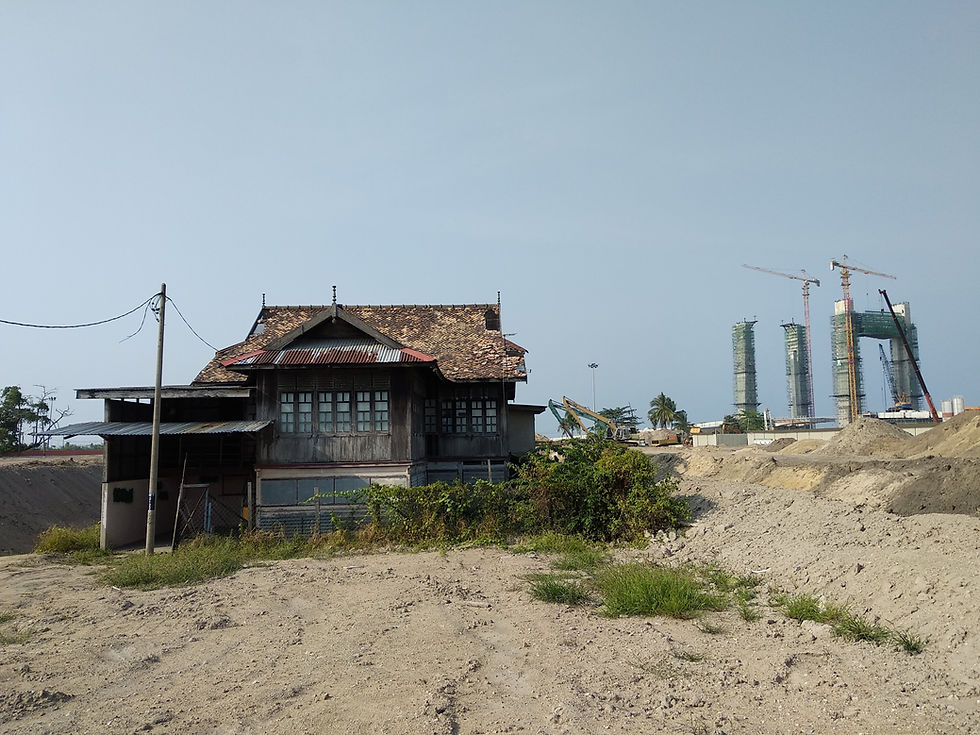Cities for People; Urban Design By All
- Shuhana Shamsuddin

- Dec 9, 2020
- 4 min read
Updated: Jan 11, 2021
The Prime Minister call for Urban Planning to meet the needs of the people and to provide gender and age-friendly urban centres during the Malaysian Urban Forum recently is very timely. For so long our cities have been so car-centric and the race of building as many elevated highways within the city seems endless. Our city centres are still not walkable and the urban neighbourhoods are still not safe. Access to recreational facilities is still limited and people have to brace through traffic congestion especially in the Klang Valley only to have access to crowded parks. Our city centres are still lacking in character and slowly many places of historical significance have been eroded.

Valuable heritage areas are demolished in the pursuit of ‘development’
There seems to be a huge gap between policies drafted up for the planning and management of the urban areas and the actual conditions on the ground. There are so many studies and master plans being produced but at implementation levels, they remain pretty pictures and impressive statements. What good are nice plans and beautiful proposals when they are not translated into effective urban design solutions? We still have many beautifully designed buildings which are not responsive to its context or do not fit into the whole ensemble.
In order for cities to meet the needs of the people and friendly to the gender and all age groups, all the policies must be seen to meet the needs of the user in the actual environment. For example, the people with disabilities and the elderly are still being discriminated in the city centres due to inaccessible places even though the People with Disability Act had long been in place. Women are still exposed to danger from crimes such as handbag snatching and rape, especially at night due to poorly lit places and lack of surveillance. This is despite the Safe City Program and Crime Prevention Through Environmental Design (CPTED) policies which have been introduced to the local authorities more than a decade ago.
As a nation, we are fast reaching an ageing society and yet our cities are not yet ready to provide the environment that can support the increasing elderly population. The design of buildings and urban spaces must incorporate universal design approach where barriers free design and accessibility become an important consideration in the design. This should also be important considerations in the development and building control procedure before the granting of planning permission. Drawings submitted must be scrutinised for compliance with the People with Disability Act before approval.
In designing cities for all, it is important for all architects to embrace the universal design approach and planners to be aware of the community needs which ranged from the child, youth, adults and elderly from all socio-economic background.

Provision of barrier-free facilities for all ages in public areas
There have been many kinds of research in urban design that have been conducted which remained on the shelves in the library or published in index journals only. In universities, urban design theories developed in the west which may not suit the environmental and cultural context of the country are still being taught. Whilst it is important that the basic urban design theories and principles are being exposed, the adaptation of these theories to the local context is important in order for the genius loci and sense of place of our cities to be retained. The copy-pastes syndrome and replication of places based on templates elsewhere should be avoided.
The concern for urban design and the implementation of it cannot be left to only one profession, for example, the planners, as the execution of good urban design practice requires the collaboration of the policymakers, the development control officers and the architects, landscape architects and engineers as the professionals who are actually translating the policies and guidelines on the ground. A concern by the politicians for better design of our cities is important to influence the developers to be committed to good urban design that will be manifested through the building design commissioned to the architects. The public through the local community, resident associations, NGO can act as pressure groups to demand better design of cities to meet the needs of the people. A strong public voice is one of the key success factors of improving the character of cities and conservation of historical places in the UK. Hence, a stronger public voice in influencing the decision affecting the future development of cities in Malaysia is much needed.
An example is the UK, that was really shaken over by Prince Charles attack on the mediocrity of cities and architecture in his book, A Vision for Britain in the late nineties. The open criticism was taken as a challenge by the professionals that eventually result in a better transformation on the character of their cities. Perhaps it is about time that Malaysia needs to be awakened to produce a better design of cities that have its own identity and character whilst meeting the needs of the people from all walks of life. It is the role of PEREKABANDAR to be the voice to raise this concern and help to bring forth important urban design issues that need to be addressed to increase the quality of the cities in Malaysia. As a multi-disciplinary association consisting of members that are formally trained in urban design or having interest or work related to urban design, it is hoped that PEREKABANDAR would contribute significantly to the nation in doing so.











Comments